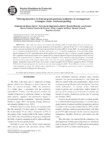Use este identificador para citar ou linkar para este item:
http://www.alice.cnptia.embrapa.br/alice/handle/doc/959615Registro completo de metadados
| Campo DC | Valor | Idioma |
|---|---|---|
| dc.contributor.author | ZANINE, A. de M. | pt_BR |
| dc.contributor.author | NASCIMENTO JÚNIOR, D. do | pt_BR |
| dc.contributor.author | SOUSA, B. M. de L. | pt_BR |
| dc.contributor.author | SILVEIRA, M. C. T. da | pt_BR |
| dc.contributor.author | SILVA, W. L. da | pt_BR |
| dc.contributor.author | SANTOS, M. E. R. | pt_BR |
| dc.date.accessioned | 2013-06-10T11:11:11Z | pt_BR |
| dc.date.available | 2013-06-10T11:11:11Z | pt_BR |
| dc.date.created | 2013-06-10 | pt_BR |
| dc.date.issued | 2013 | pt_BR |
| dc.identifier.citation | Revista Brasileira de Zootecnia, Viçosa, MG, v. 42, n. 3, p. 155-161, mar. 2013. | pt_BR |
| dc.identifier.uri | http://www.alice.cnptia.embrapa.br/alice/handle/doc/959615 | pt_BR |
| dc.description | This study was carried out to analyze the tillering profile of Guinea grass (Panicum maximum cv. Tanzania) pastures subjected to two grazing frequencies (time necessary to intercept 90 and 95% of the incoming light) and two post-grazing heights (30 and 50 cm) in the period from November 2005 to October 2006. The experimental design was of completely randomized blocks with three replications, in a 2 × 2 factorial arrangement. At the end of the spring, pastures managed with 90% light interception showed greater tiller appearance rates in relation to pastures managed with 95%, regardless of post-grazing height. In the summer and fall, pastures managed with post-grazing height of 30 cm showed higher tiller appearance rates in comparison with pastures managed at 50 cm, regardless of grazing frequency. Concerning the tiller mortality rates, in the summer, higher values were found for pastures managed at 90/50 and 95/30 (interception/height), intermediate values at 90/30 and lower values in those managed at 95/50. Pastures managed at 90/30, 95/30 and 95/50 in the fall presented greater tiller mortality rates than those managed at 90/50. These differences do not occur in the winter/beginning of spring. The stability index remained above 1 all through the experimental period. All management strategies evaluated are adequate for Guinea grass. | pt_BR |
| dc.language.iso | eng | eng |
| dc.rights | openAccess | eng |
| dc.subject | Ecofiosiologia vegetal | pt_BR |
| dc.title | Tillering dynamics in Guinea grass pastures subjected to management strategies under rotational grazing. | pt_BR |
| dc.type | Artigo de periódico | pt_BR |
| dc.date.updated | 2013-06-24T11:11:11Z | pt_BR |
| dc.subject.thesagro | Pastejo | pt_BR |
| riaa.ainfo.id | 959615 | pt_BR |
| riaa.ainfo.lastupdate | 2013-06-24 | pt_BR |
| dc.contributor.institution | Anderson de Moura Zanine, UFMT; Domicio do Nascimento Júnior, UFV; Braulio Maia de Lana Sousa, UFV; MARCIA CRISTINA T DA SILVEIRA, CPPSUL; Wilton Ladeira da Silva, UNESP; Manoel Eduardo Rozalino Santos, UFU. | pt_BR |
| Aparece nas coleções: | Artigo em periódico indexado (CPPSUL)  | |
Arquivos associados a este item:
| Arquivo | Descrição | Tamanho | Formato | |
|---|---|---|---|---|
| RBZSilveira.pdf | 237,9 kB | Adobe PDF |  Visualizar/Abrir |









